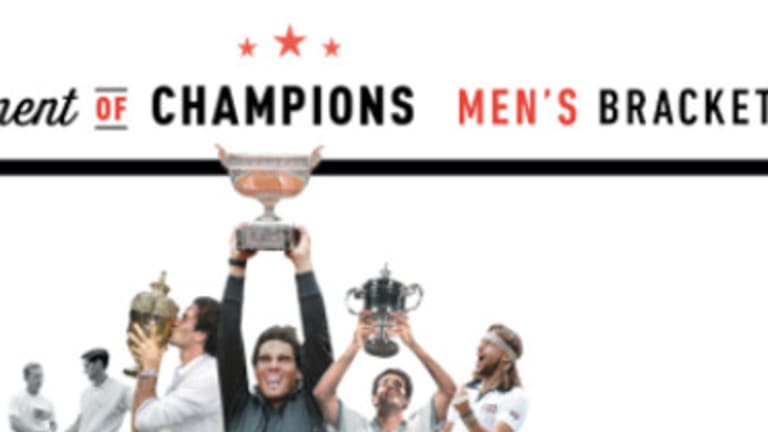Wondering what the Tournament of Champions is, and how we got here? Read more about our 50th Anniversary Celebration and get caught up on all the matches so far.
“A match made in heaven,” Steve Flink says. “There could be no sharper contrast.”
Indeed, the idea of a Pete vs. Rafa throwdown generates a lot of curiosity and speculation, but not a lot of consensus as to how it would play out. That shouldn’t be a surprise, considering that the two are tied with 14 major titles apiece, and each has dominated one Slam—Nadal at the French Open, Sampras at Wimbledon.
In the past, Sampras has expressed confidence that, because Nadal typically plays so far back, he could push forward and take over the net. And it’s true, Rafa hasn’t faced anyone of Sampras’ skill level who would attack him so relentlessly. Sampras, understanding Nadal’s superiority from the back of the court, would slide his first serves wide to Rafa’s two-handed backhand in the deuce court; come in behind first and second balls; and chip-and-charge on Nadal’s second serve whenever possible.
“On clay, it would probably go 6-2 to Rafa; Pete would be lucky to hold a couple of times,” Patrick McEnroe says. “But on a hard court and grass, Pete would have too much firepower. Rafa’s weakness is his return, and Sampras would use his forehand to disrupt Nadal at the baseline.”
At the same time, though, Sampras has never faced anyone who hit his ground strokes with as much weight as Nadal. If Pete’s go-to play would be the net rush, Rafa’s would be the same one that he has used to win hundreds of other matches: The high-kicking crosscourt forehand into his opponent’s backhand. Like Roger Federer, Sampras would struggle to counter those shots with his one-hander. “Pete’s backhand, both in returning and trading shots, makes him vulnerable,” Mayotte says.
But the mix of surfaces here might favor the American. Nadal would obviously win the first set on clay, and Sampras would be favored to take the final set on grass. How about the middle set, on hard courts? Pete, a five-time U.S. Open champion, grew up playing on the stuff in California. Even when he was 31 years old, when he found his rhythm on the asphalt at Flushing Meadows, there wasn’t anything anyone could do to stop him.
